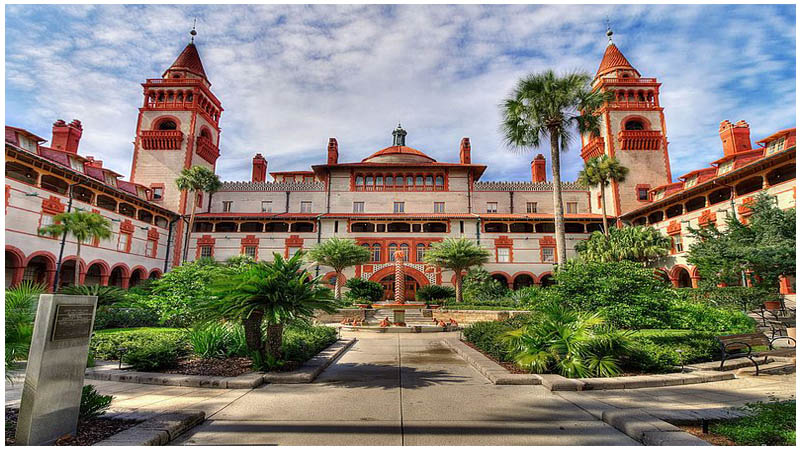This was a project worth millions of dollars, a feat undertaken by the American industrialist and millionaire Henry Flagler. During his stay in St. Augustine, Florida, in the winter months of 1882-3, Flagler was enchanted by the history of this town and thought it would be the perfect place for a winter resort.
His attention was particularly caught by the poured concrete construction technique that was used to create Franklin W. Smith’s Villa Zorayda.
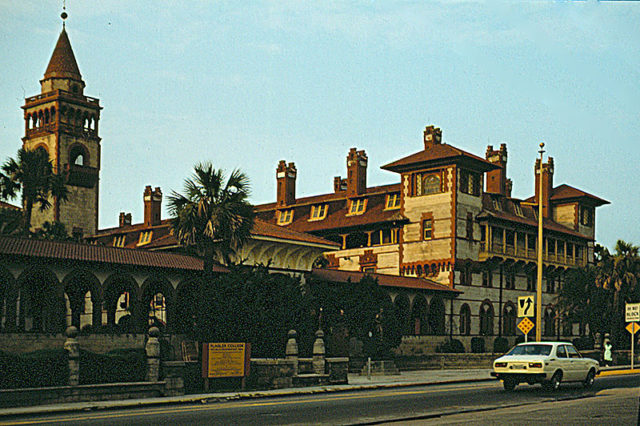
Flagler even offered to buy the property but Smith turned down him down. When Flagler left St. Augustine, he did not forgot about Villa Zorayda. A couple of years later he returned with another proposal; to form a partnership and build a hotel. All Smith had to do was to invest $50,000 and Flagler would pay the rest.
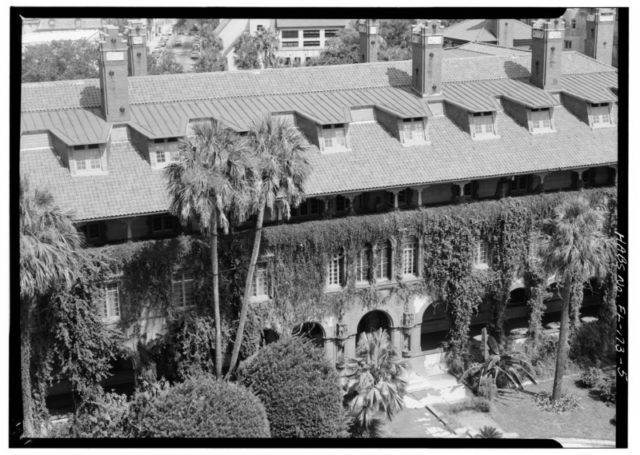
Franklin Smith had some difficulties gathering the necessary funds so Flagler financed the project alone, however Smith provided instruction on the techniques used in his grand villa. Construction began in 1885 on a plot of land that was once used as an orange orchard. Former shipbuilders Joseph McDonald and James McGuire were given the contract, and they hired a number of notable architects, designers, and artists.
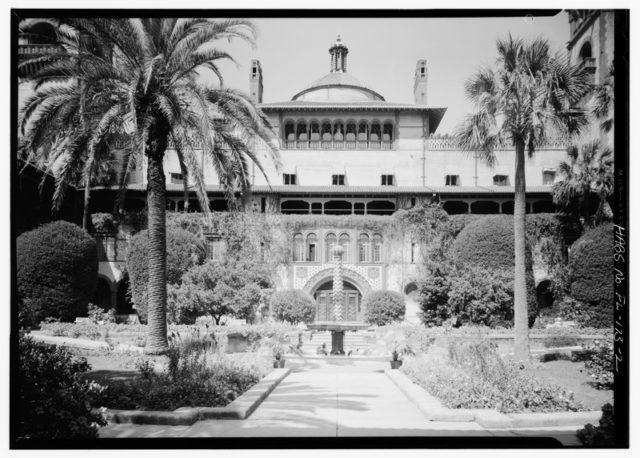
New York architectural firm Carrère and Hastings came up with the overall design of the hotel; this was among their first projects, later they would work on the New York Public Library. Louis Comfort Tiffany provided the hotel with magnificent stained glass windows that were installed in the dining room, and New York City-based Pottier & Stymus, whose work can today be seen exhibited in the Brooklyn Museum, were behind creating the furniture.
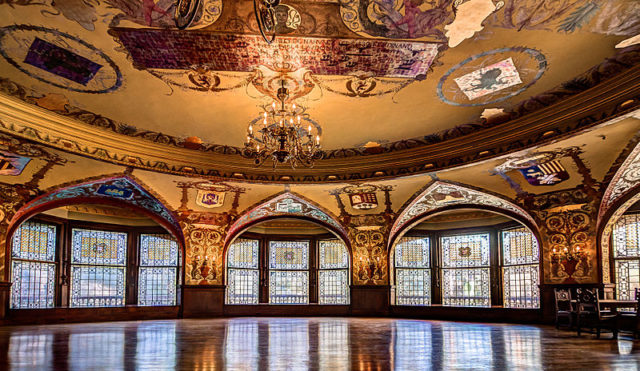
Working on the watercolor elevation was Emmanuel Louis Masqueray, a prominent Franco-American architect, and the murals that are found in the dining room and rotunda are the work of George W. Maynard, who also painted a number of murals in the Library of Congress.
Forward-thinking Flagler had his hotel designed to be wired throughout with electricity, the first building in the country to do so. He was good friends with Thomas Edison so no doubt he had some influence in this idea — in fact it was Edison himself who personally oversaw the installation of DC dynamos. When the hotel was opened, its guests were terrified at the idea of electrical wires running within the wall and were too scared to use the switches to turn on the lights. So this was also the first hotel to hire staff just to turn the lights on and off for it’s guests.
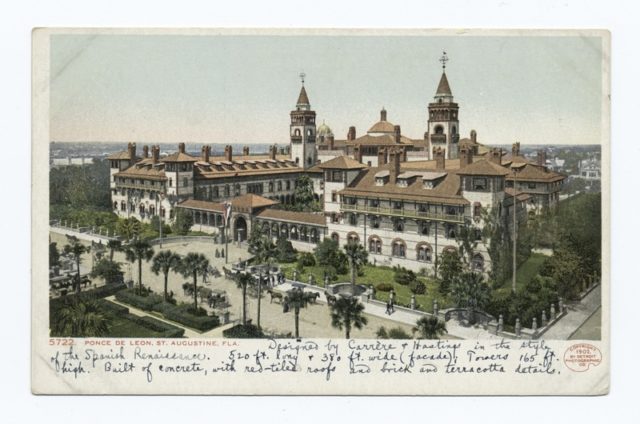
The hotel also had running water that was stored in two 8,000 gallon water tanks. From the day it opened on January 10, 1888, the Ponce de Leon Hotel was a major success, inspiring Flagler to open a second hotel which he named Hotel Alcazar. For years the Ponce worked beyond expectation. But when World War II came, the hotel was commandeered by the Federal Government and it was converted into a training center for the Coast Guard.
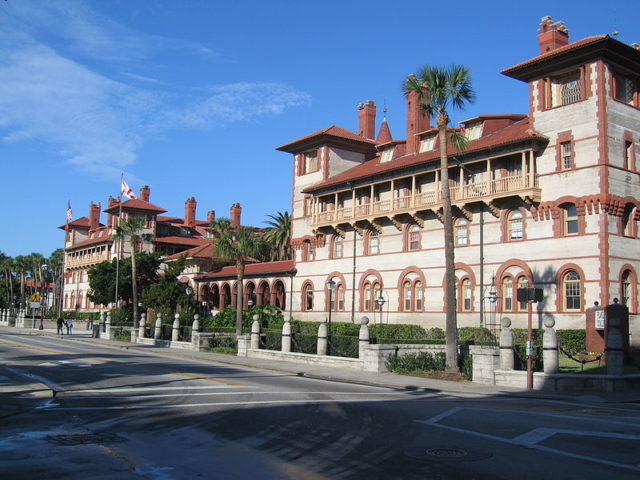
Throughout the war, the hotel received and trained many young recruits. The hotel resumed normal business after the war, but the number of visitors slowly declined over the years until, in 1967, the Ponce de Leon closed its doors.
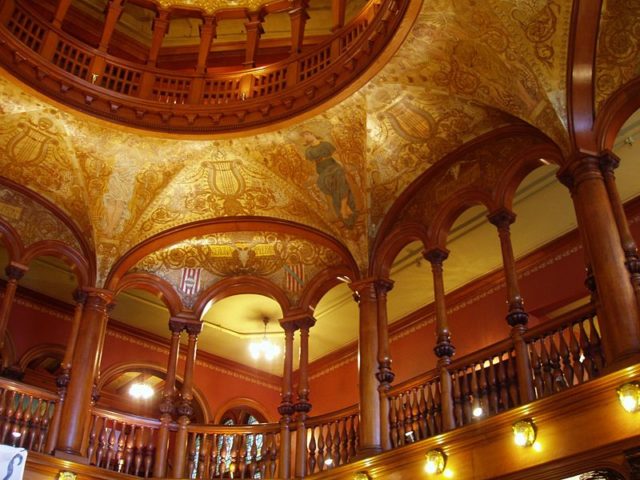
But it wasn’t forgotten. In 1968 the Ponce became part of Flagler College campus; it was added to the National Register of Historic Places in 1975, and was designated a National Historic Landmark in 2006. This splendid piece of architecture survives in pristine condition and continues to impress visitors.
